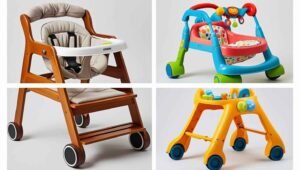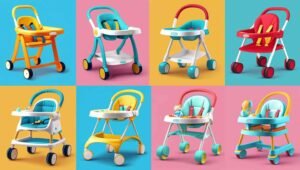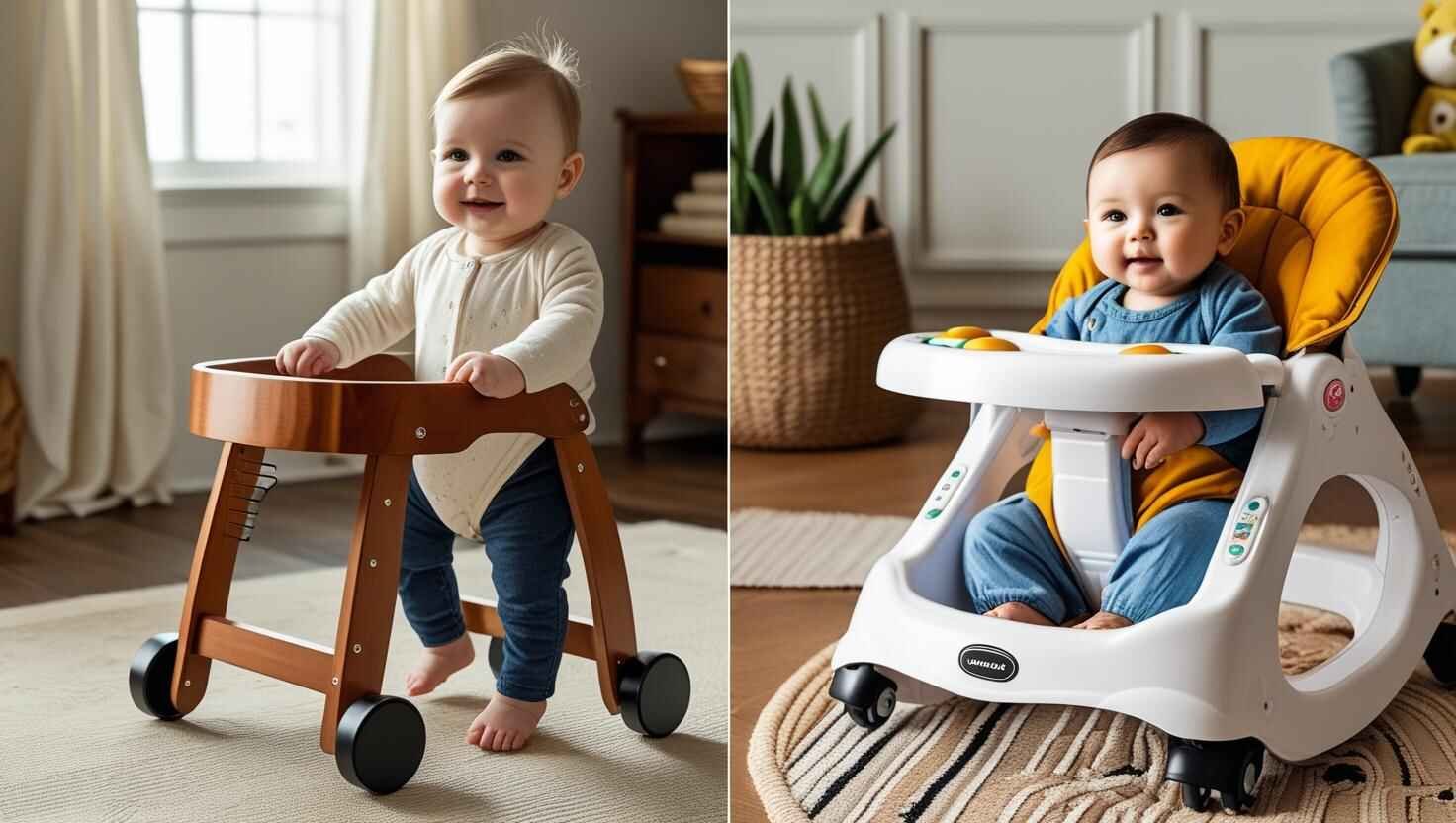Watching your baby take their first steps is one of those unforgettable parenting milestones. It’s exciting, a little nerve-wracking, and incredibly rewarding all at once. If you’re like most parents, you want to make that journey as safe and supportive as possible. That’s where baby walkers come into play, especially learning walkers. These aren’t just for mobility—they’re packed with activities that help babies develop critical motor skills, balance, and even early cognitive abilities.
But let’s be honest: not all learning walkers are created equal. Some are better designed, more durable, and simply more fun for little ones than others. In this guide, we’re diving deep into the world of the best learning walkers for babies. We’ll cover the top picks, what to look for, answer common questions, and help you feel confident about choosing the right one for your growing explorer.
So whether your baby is just pulling up or already trying to bolt across the living room, this guide will help you find the perfect learning walker to keep them moving (and learning!) safely.
Top Picks for Best Learning Walkers for Babies
When you’re picking a learning walker, you want something that’s sturdy, engaging, and safe. Here’s a breakdown of some of the best options available today:
| Learning Walker | Best For | Key Features |
| VTech Sit-to-Stand Learning Walker | Overall Best | Interactive play panel, adjustable speeds, removable panel |
| Melissa & Doug Chomp and Clack Alligator Walker | Best Wooden Option | Durable wood design, simple interactive elements |
| Fisher-Price Laugh & Learn Smart Stages Walker | Best for Early Learning | Songs, phrases, two-speed settings |
| Radio Flyer Classic Walker Wagon | Best for Stability | Solid wood body, resistance clickers for safety |
| Kolcraft Tiny Steps 2-in-1 Activity Walker | Best Convertible | Can be used as seated or walk-behind walker |
| Hape Wonder Walker | Best Eco-Friendly Option | Eco-conscious materials, multiple activities |
Each of these walkers brings something unique to the table, whether it’s a focus on sensory development, balance support, or simply making learning feel like playtime.

What to Look for When Choosing a Learning Walker
There are a lot of walkers out there, and not every model fits every baby. Here’s a quick checklist of important things to consider when shopping for a learning walker:
- Stability and Safety
First and foremost, you want a walker that isn’t going to tip over easily. Look for models with a wide base and a low center of gravity. Some even come with speed controls or friction features to prevent runaway walkers.
- Adjustable Speed Settings
Some babies are cautious while others are little speed demons. Walkers with adjustable wheel speeds are awesome because you can tailor the resistance to your baby’s skill level.
- Interactive Features
The more interactive features a walker has—think buttons, lights, music, and textures—the more your baby will stay engaged. This also encourages fine motor skill development alongside gross motor skills.
- Durability
Let’s be real: babies can be rough on toys. You’ll want a walker made from sturdy, high-quality materials that can handle bumps, spills, and the occasional launch across the room.
- Versatility
Some walkers double as activity centers or can be used for multiple stages of development. These 2-in-1 options often offer better value for money.
- Size and Weight
Make sure the walker isn’t too bulky or too heavy for your baby to move comfortably. On the flip side, it shouldn’t be so light that it slides out from under them with the slightest push.
- Ease of Cleaning
Babies and messes go hand-in-hand. A walker that’s easy to wipe down will save you a lot of headaches.

FAQs
When can my baby start using a learning walker?
Most babies start using a learning walker between 9 and 12 months old, depending on their physical development. Your baby should be able to sit up independently and pull themselves to a standing position before using a walker.
Are learning walkers safe?
When used under supervision and in a safe environment (like away from stairs and sharp furniture), learning walkers can be very safe. Always make sure to follow the manufacturer’s age and weight recommendations and keep an eye on your little one while they use it.
Do walkers help babies learn to walk faster?
There’s a bit of debate about this. Some experts say that while walkers help babies build strength and coordination, they don’t necessarily speed up the walking process. Every baby is different, so it’s important to focus on safe exploration rather than hitting milestones early.
How long should babies use a walker each day?
Short sessions are best—think 15-20 minutes at a time, once or twice a day. Too much time in a walker can actually interfere with natural walking development because babies rely on the support rather than building their own balance.
Should I get a seated walker or a push walker?
For developmental purposes, a push walker (where the baby walks behind it) is generally considered better because it promotes muscle use that’s closer to actual walking movements. Seated walkers can still be fun but might not encourage independent walking skills in the same way.
What surfaces are best for using a learning walker?
Flat, hard floors like wood or tile are ideal. Thick carpet can make it harder for your baby to push the walker effectively, though some models are designed to work on all surfaces.
Can my baby use a learning walker outside?
Some walkers are sturdy enough for outdoor use, but most are intended for indoor environments. Always check the manufacturer’s guidelines and use your best judgment to ensure safety.
Choosing the best learning walker for your baby is all about matching the right features to your child’s current stage and personality. Whether you want something classic like the Radio Flyer, loaded with activities like the VTech Sit-to-Stand, or eco-friendly like the Hape Wonder Walker, there’s a perfect match out there.
Remember, the goal isn’t to rush your baby into walking—it’s to support them as they explore, build strength, and gain confidence on their own timeline. With the right walker (and a little bit of patience), you’ll be chasing after your little one before you know it.
Happy walking adventures!

